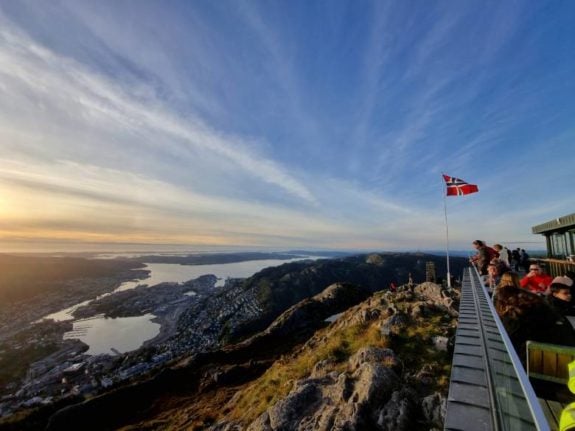Bergen, Norway’s second-largest city, often gets a bad rep for its rainy weather. With approximately 230 rainy days a year, it is no surprise that it is commonly referred to as the “rain capital of Norway.”
However, despite the numerous grey and wet days, one must remember that Bergen also has a lot of advantages and that life in the city can be pretty satisfying.
Here’s our list of things that Bergen residents sometimes take for granted but that significantly increase the quality of life in the city.
Jaw-dropping cultural heritage
For more than nine centuries, Bergen has attracted people from all walks of life and faraway corners of the world. After being founded in 1070, the city developed around its charming harbour, which was – and continues to be – a key point for trade and maritime business.
Bergen was also the first capital city of Norway, and in the 13th century, the Hanseatic League opened a European office on the wharf in Bergen, which was called Bryggen.
Today, Bryggen is the main tourist magnet in the city, and it is one of the most recognised international symbols of Norway. It has also been included on UNESCO’s World Heritage List.
Unfortunately, most long-term Bergen residents swiftly start thinking of this magnificent cultural and architectural heritage – including the medieval Bergenhus fortress, St Mary’s church and the Bryggen wharf – as something “normal.”
After two or three coffees in one of the multiple cafes at Bryggen, one quickly forgets how amazing the scenic backdrop is.
Therefore, remember to “smell the roses” whenever you visit the Old Town and stay appreciative of its unique legacy.
A fantastic mountain accessible from the city centre
A family-friendly mountain easily accessible by funicular from the city centre is one of Bergen’s most beloved features of outdoor life.
Mount Fløyen offers incredible views of the city’s surroundings – including numerous islands, mountains, and fjords – as well as a host of hiking and sports opportunities.
Kids love the many playgrounds and activities available on the mountain (such as the Fløysletten playground), while parents can enjoy cafes, tours, or a short lunch stop at the well-known Fløien Folkerestaurant.
As a permanent fixture of the city’s skyline, its value to both locals and tourists can’t be overstated. So, if you get the chance to visit or stay in Bergen, make sure to make the most of Fløyen, its “green heart.”
A gateway to fjord exploration
While tourists are often well-aware of Bergen’s unique geographical position, which makes it a highly-suited base for fjord exploration and cruises, residents often forget that they, too, can take advantage of this city feature.
Nicknamed the “gateway to the fjords”, Bergen offers multiple fjord cruises, many of which are available year-round. You can choose between 2 and 3-hour cruises to the Salhus Fjord and Kverna Fjord or opt for shorter cruises that focus on the harbour and the City Fjord.
Regardless of the cruise you pick, you’ll get to partake in a memorable journey filled with some of the most magnificent scenic locations and cultural spots that Western Norway has to offer.
Rainbow bonanza
Despite all the rain that the city gets, because of its position on the Atlantic coast, its residents can enjoy temperate temperatures – compared to what one might expect for the region.
Winters are rarely extremely harsh, and there isn’t much snow. Furthermore, the city’s unique microclimate, which stems from the fact that it is situated in a valley and surrounded by seven mountains, creates the ideal conditions for a beautiful phenomenon – a multitude of rainbows can be seen in the spring and autumn.
In October and November, it’s not rare to see 2 or 3 different rainbows form on the same day, as rainy and sunny weather trade places in short hourly intervals.
On a further note, abundant rain also fuels waterfalls close to the city, so you can enjoy day trips to stunning locations even in wet and cloudy weather.
A high level of safety
If you’ve stayed or lived in Bergen for any period of time, you’ve likely become accustomed to a very high overall level of safety and low crime rates.
Generally speaking, the city is very safe – especially when one takes into account that it is the second most populous city in the country.
There are few areas which locals would single out as risky. Rare examples include tourist hotspots close to the Fish Market or the central train station, which are visited by pickpockets now and then or parks where people get mugged during nighttime.
However, all it takes is a trip to any European metropolis – such as Brussels or London – to quickly be reminded of the fact that Bergen is truly a safe and orderly city with an above-average quality of day-to-day life.



 Please whitelist us to continue reading.
Please whitelist us to continue reading.
Member comments